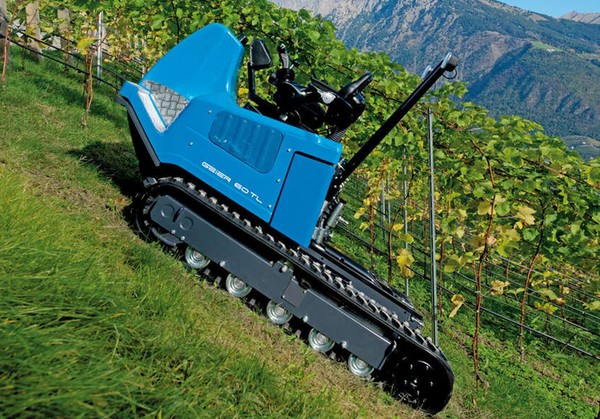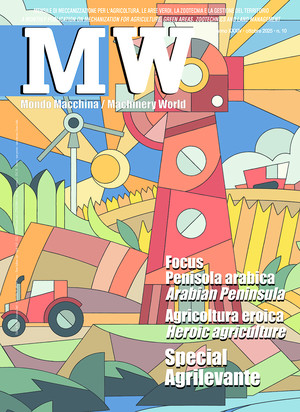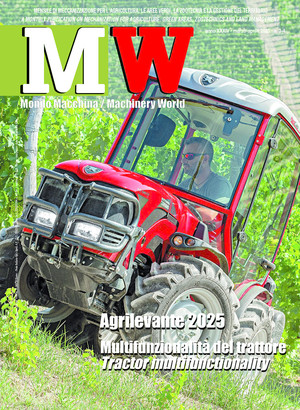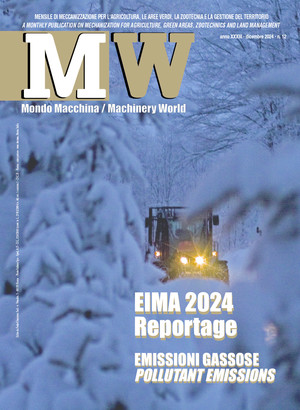
Heroic agriculture: motorized wheelbarrows and hydrostatic minitractors
Heroic agriculture has developed in difficult environments, where extreme slopes and terraced land make the use of traditional machinery impossible. Motorized wheelbarrows and small hydrostatic tracked tractors help to make work sustainable in challenging areas
Heroic agriculture has developed in extreme environments, typically on land with slopes exceeding 30%, at altitudes over 500 m, or on terraced slopes, where the use of conventional agricultural machinery is limited if not impossible. Consequently, intensive manual labor is required, leading to high production costs due to low yields and the need for specialized labor. However, heroic agriculture plays a crucial role in landscape conservation, land protection, and maintaining traditional local crops, without forgetting that, according to FAO estimates, by 2050 the world population will reach 10 billion people, and an additional 590 million hectares of arable land will be needed to produce the required food. Therefore, even areas currently considered "marginal" will have to contribute to global agricultural production.
In this context of renewed interest in cultivating less productive areas, it is necessary to use compact and highly specialized machinery, manual labor, and sometimes even draft and pack animals. However, given that it is impossible to envisage a financially sustainable future with operators who, for example, perform phytosanitary treatments with hand-held sprayers or manage the grass under the rows with scythes or brush cutters, in recent years a process of technological innovation has been underway to develop machinery suitable for these environments, such as small hydrostatic tracked tractors, drones for vineyard management (still in the research phase), and light and versatile means of transport like motorized wheelbarrows.
Motorized wheelbarrows. These are small self-propelled vehicles designed for transporting loads in contexts where the use of bulkier vehicles is impractical or even impossible, such as in rugged agricultural land, on narrow paths or rows, on slopes or terraced plots. Introduced as a motorized evolution of manual wheelbarrows, motorized wheelbarrows have found widespread use in agriculture, construction, gardening, and forestry management, becoming essential tools, especially for small farms.
Motorized wheelbarrows can be equipped with gasoline or diesel internal combustion engines, or electric motors. In the former case, they generally feature 4-stroke single-cylinder engines with power ranging from 4.5 to 6 kW. They are particularly suitable for transporting loads over short distances. Diesel models are usually more robust and powerful (7 to 9 kW) and deliver higher torque. As a result, they are better suited for heavy-duty work such as transporting wood, manure, or stones in hilly or wooded terrain. Conversely, electric motor-powered wheelbarrows powered by lithium or lead batteries (with an average autonomy of 2-6 hours) are particularly useful in wineries or floricultural businesses, where noise and exhaust fumes can be a problem (greenhouses, cellars). Their main limitation is their autonomy and the consequent need for frequent recharging. However, they have low running costs and require very little maintenance compared to models powered by internal combustion engines.
The most economical motorized wheelbarrows have a 2-6 speed mechanical transmission; in the more professional versions, the transmission is hydrostatic, with continuous variation. The latter solution offers greater versatility in all conditions and on slopes or in dangerous situations, where both precision in movement and the ability to instantly stop the machine are required.
The propulsion systems consist of small diameter pneumatic wheels or rubber tracks. The two-, three-, or four-wheel versions are lighter and are suitable for compacted ground, driveways, or farmyards. They are less expensive and easier to maintain, but offer limited grip on muddy or uneven ground. They may feature four-wheel drive and enhanced brakes for safe operation on steep slopes. Tracked versions distribute the machine's load better on the ground, reducing soil compaction and ensuring adequate traction even on slopes and in conditions of poor grip. They are ideal for hilly and wooded areas, but are slower and more cumbersome to maneuver than wheeled models and are generally more expensive.
As a rule, motorized wheelbarrows are equipped with tipping bodies (including three-way tipping), operated manually or by means of a dedicated hydraulic cylinder.
Acting as mobile power units, albeit with limited power, the latest models of motorized wheelbarrows are no longer limited to transporting loads. They can be fitted with various accessories to enhance their operational versatility, such as: small front mechanical shovels, adequate for moving soil or manure in stables and small plots of land; winches and small cranes, which are highly valued for moving logs or bulky loads in woods and olive groves; snow plow/salt spreader kits for winter road maintenance; mineral fertilizer spreader modules, either centrifugal or drop type; micro-granulators for localized fertilization and phytosanitary treatments, particularly in horticulture. It is also possible to replace the tipping body with a module to carry out actual phytosanitary treatments, such as a fan atomizer, tipically used in vineyards, orchards, and olive groves to distribute crop protection products, but also sulfur, copper, and foliar products, and a nozzle sprayer, with a tank capacity typically ranging from 50 to 200 liters, complete with a piston and diaphragm pump. This module can distribute the mixture either using manual lances for localized treatments, or through small spray bars (up to 3-4 m wide), particularly for treating vegetables and/or small seed crops.
In practice, the motorized wheelbarrow can be configured as a small, versatile tool carrier frame, ideal for small farms, greenhouses, terraced vineyards, and sloped crops, representing an efficient and economical working tool, essential where conventional vehicles cannot be used.
Small hydrostatic tracked tractors. These are an interesting solution for medium-sized farms operating in rough and difficult-to-access areas. Their low center of gravity, tracks, and hydrostatic transmission ensure safety, reliability, and good maneuverability, making them suitable for winegrowers, fruit growers, and forestry operators. Typically, they are powered by diesel engines with a power range from18 to 55 kW, have a total weight of between 1,000 and 3,000 kg, are narrow in width (between 700 and 1,300 mm) and are equipped with hydrostatic transmission, driven by piston pumps with joystick control and speed regulator. Their speed usually ranges from a few meters per hour to 12 km/h. Their tracks are generally made of rubber, with adjustable widht; as each is driven by an independent hydraulic pump, the turning radius is effectively close to zero, meaning the machine is able to turn on its own axis. This feature, combined with the possibility of implementing reversible steering, allows for extreme maneuverability, even in critical situations. Unlike conventional tracked tractors with mechanical transmission, the braking system is "negative," meaning that the brakes normally remain engaged thanks to powerful springs, which are only deactivated when there is pressure, provided by the regular operation of the tractor's hydraulic circuit. In this way, if the engine shuts down or the system fails, the vehicle remains automatically braked, preventing uncontrolled movements, a feature that is intuitively very important for working on slopes.
In addition to the towing hitch for coupling with operating machines, a hydraulic lift with rear three-point attachment (and sometimes also a front one) is usually fitted, along with numerous hydraulic outlets, often double-acting (up to 10). The mechanical power take-off is usually available at the conventional speed of 540 rpm, often integrated with ECO mode. A foldable roll bar is installed to ensure operator safety.
Small hydrostatic crawler tractors offer high maneuverability, continuous and smooth control of forward speed, and excellent traction on difficult terrain, thanks to optimal weight distribution and continuously variable transmission, thus limiting soil compaction. The possibility of coupling them with numerous operating machines (mowers, small trailers, sprayers and atomizers, mulchers, branching and defoliating machines, etc.) makes them very similar operationally to conventional tracked tractors from an operational point of view. However, they require a greater financial investment than mechanical tractors and generally move at reduced speeds when traveling on the road. It should not be forgotten, however, that hydrostatic transmission typically offers lower performance than mechanical transmission: this results in lower energy efficiency, which,at the same power output, has an impact on fuel consumption. Moreover, particular attention must be paid to the maintenance of the hydraulic system, which in this case is the fundamental component of the entire machine.








